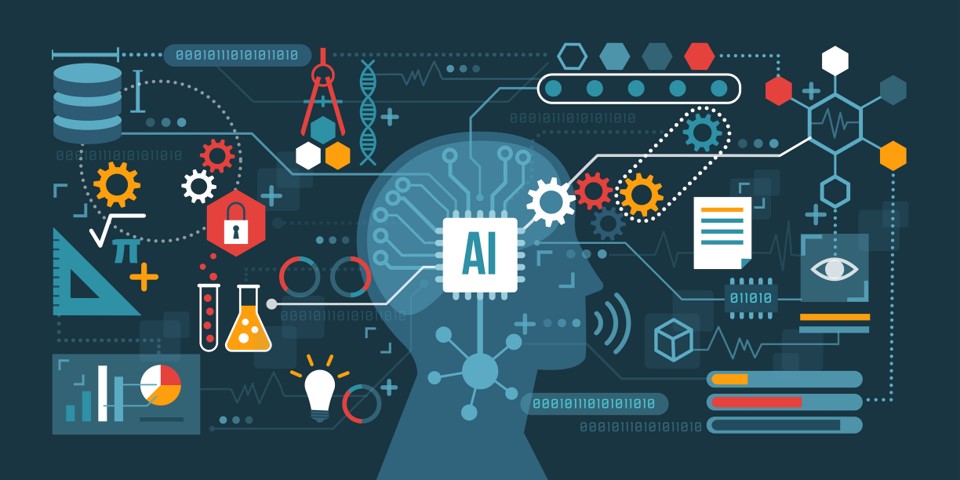
by Jeanne Zepp
July 16th marked the second celebration of Artificial Intelligence (AI) Appreciation Day. Created in 2021, the day recognizes ways in which AI is benefiting humanity. It also seeks to foster dialogue on the ethical issues surrounding AI advancements, especially the ethics of developing “an advanced A.I. … that could become conscious, thus a sentient being.”
Recently, a Google engineer claimed that this day had already arrived. He asserted that the tech giant’s Language Model for Dialog Applications (LaMDA) exhibited “a level of consciousness.” He allegedly saw sentience in LaMDA messages communicating fear of being turned off and other apprehensions. Google has since fired that engineer for violating company policies.
Ethical considerations aside, AI and its many subdomains including machine learning and natural language processing (hereafter collectively referred to as AI), are revolutionizing medicine, finance, education, transportation and more. We all are familiar with Siri and Alexa; facial recognition; and the efforts to perfect self-driving cars and trucks. We’ve heard how AI has improved the diagnostic capabilities of mammography and radiography and advanced service offerings in banking and finance. We’ve likewise all experienced the bots that play major roles in the customer service function of virtually every organization.
AI and its many subdomains are revolutionizing medicine, finance, education, transportation and more.
Notably, one interesting application of AI involves identifying and distinguishing Giant Pandas in China. Their facial features have subtle differences, largely undistinguishable to the human eye or even human facial recognition applications. Researchers are applying new AI technology developed just for this purpose to discern minute differences between these majestic creatures to help identify them individually. Such knowledge will facilitate tracking and conservation efforts.
AI and Cybersecurity
Two of the most important uses of AI relate to national security and cybersecurity. An IEEE Computer Society article by Gaurav Belani provides an overview of the application of AI in cybersecurity. He describes four distinct roles: threat detection, bot recognition/response, breach risk analysis and endpoint security. The common threads are the technology’s ability to deal with vast amounts of data, “learn” iteratively, identify patterns and respond quickly.
- Threat detection: The staggering amount of malware in use and under development exceeds the recognition and response capabilities of both human analysts and antivirus/antimalware software. AI has the capability to detect known malware as well as activities that are precursors to malware attacks. Using its natural language processing functionality, AI can discern nuances in code indicative of malware. It also can enhance its own training by accessing resources on new threats and incorporating the derived learning going forward.
- Bot recognition: Bots, which mimic human behavior, can be good or bad. Google and others use “good” bots in the form of search engine crawlers to identify new or updated information on the internet. “Bad” bots can wreak havoc via malicious activities including stealing data/passwords and breaking into accounts. AI evens the playing field by pitting automation against automation. AI can analyze website traffic and distinguish the nature of the activity (human or bot) and the intent (good or bad).
- Breach risk analysis: To secure a network, organizations must first define the people, devices and applications using the network and the access each possesses. AI can not only assist in inventory development but also in analysis of weak points where breaches are most likely to occur. In so doing, organizations can institute corrective actions to prevent exploitation of weaknesses.
- Endpoint security: AI overcomes some of the drawbacks associated with signature-based solutions such as antiviral/antimalware software. AI monitoring establishes baseline normal activity for each endpoint. When typical levels are exceeded, AI can alert analysts or initiate other responses.
These advantages come at a cost, however. AI is expensive in terms of human and financial resources. In particular, Belani underscores the need for numerous, costly, high-quality datasets in order to train AI systems to deliver reliable and correct results. Another downside is that AI works equally well for cybercriminals, and this technology is being used to defeat cyber defenses. Last, there is a trust factor regarding AI’s accuracy. AI is only as good as the datasets employed in training; verifying output correctness can be challenging.
There is a trust factor regarding AI’s accuracy. AI is only as good as the datasets employed in training; verifying output correctness can be challenging.
What the Future May Hold
Many fear the future impact of AI on the human workforce. Experts counter that AI focuses on specific tasks, and many job functions are not programmable. Moreover, AI cannot perform novel work efforts, that is, tasks for which it has not been trained. Humans hold the advantage when it comes to real-time natural intelligence, creativity, adaptability and problem-solving skills.
Our recent Technology Report on security operations centers (SOCs) conveyed an important point when it comes to AI use: it is better thought of as augmented rather than artificial intelligence. AI can not only free people from many mundane tasks but also perform them better. Yet, AI cannot compete when it comes to higher-order activities. Pairing the two in a synergistic way achieves “the best of both worlds.”
Transitioning from today’s narrow artificial intelligence to the realms of artificial general and super intelligence presents exciting, and perhaps frightening, prospects if we believe the movie plots on the topic. That future is many years off and, if we espouse ethical AI development, we can confidently rely on AI technology to continue to improve the human experience.